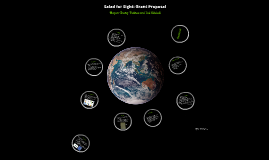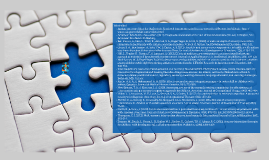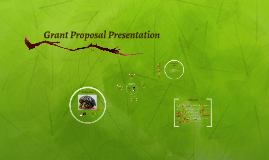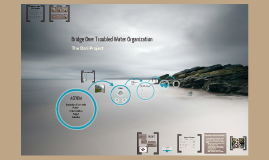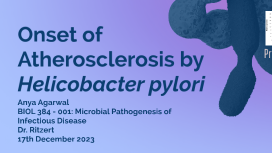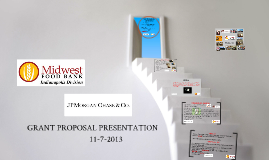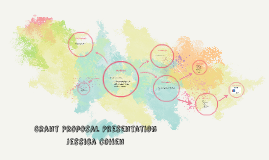Grant Proposal Presentation
Transcript: Sensory Processing Disorders and ASD The rate of ASD has increased from 1:150 in 2000 t0 1:68 in 2010 ("Autism Spectrum Disorder (ASD)," n.d.) The DSM-V changed the criteria for diagnosing Autism. One criterion for the diagnosis of ASD is restrictive or repetitive behavior, interests, or activities. For example, hyperreactivity or hyporeactivity to sensory input (American Psychiatric Association, 2013). The Effects of Multi-Sensory Environments on Students with Autism Spectrum Disorder Agenda Sensory processing disorders and ASD Sensory Modulation Disorders (SMDs) Sensory integration theory and multi-sensory environments Positive effects of multi-sensory environments Grant proposal Purpose: to determine whether or not multi-sensory environments effect motor skills in individuals with ASD. Participants: Thirty-four children (40-65 months) diagnosed with ASD participated. Methods: Every participant received sensory integration therapy in a multi-sensory environment (ex: swings, balancing boards, trampolines, see saws, bubbles, finger paints, stress balls, weighted blankets). Pre- and post- tests (Peabody Developmental Motor Scale) were done to assess both gross and fine motor skills and the effectiveness of sensory integration therapy on motor skill levels. Pre- and post- assessment scores were then compared. Results: After comparing pre- and post- treatment mean scores, gross and fine motor skills significantly improved. (Karim & Mohammed, 2015) Work Cited Autism Spectrum Disorder (ASD). (n.d.). Retrieved from Centers for Disease Control and Prevention Website: http://www.cdc.gov/ncbddd/autism/data.html American Psychiatric Association. (2013). Diagnostic and statistical manual of mental disorders (5th ed.). Arlington, VA: American Psychiatric Publishing. Ben-Sasson, A., Hen, L., Fluss, R., Cermak, S. A., Engel-Yeger, B., & Gal, E. (2009). A meta-analaysis of sensory modulation symptoms in individuals with autism spectrum disorders. Journal of Autism And Developmental Disorders, 39(1), 1-11. Green, S. A., Ben-Sasson, A., Soto, T.W., & Carter, A. S. (2012). Anxiety and sensory over-responsivity in toddlers with autism spectrum disorders: bidirectional effects across Ttme. Journal of Autism And Developmental Disorders, 42(6), 1112-1119. Hill, L., Trusler, K., Furniss, F., & Lancioni, G. (2012). Effects of multisensory environments on stereotyped behaviours assessed as maintained by automatic reinforcement. Journal of Applied Research in Intellectual Disabilities, 25(6), 509-521 Hochhauser, M., & Engel-Yeger, B. (2010). Sensory processing abilities and their relation to participation in leisure activities among children with high-functioning autism spectrum disorder (HFASD). Research in Auis Spectrum Disorders, 4(4), 746-754. Interdisciplinary Council on Developmental and Learning Disorders (ICDL-DMIC) Work Groups. (2005). Interdisciplinary Council on Developmental and Leaning Disorders Diagnositic manual for infancy and early chldood mental health disorders, developmental disorders, regulatory-sensory processing disorders, language disorders, and learning challenges. Bethesda, MD: Author. Karim, A. E. A., & Mohammed, A. H. (2015). Effectiveness of sensory integration program in motor skill in children with autism. Egyptian Journal of Medical Human Genetics, 16(4), 375-380. May-Benson, T. A., & Kommar, J. A. (2010). Systematic review of the research evidence examining the effectiveness of interventions using a sensory integrative approach for children. American Journal of Occupational Theapy, 64(3), 403-414. Miller, L. J., Anzalone,, M. E., Lane, S., Cermak, S. A., & Osten, E. (2007). Concept evolution in sensory integration: A proposed nosology for diagnosis. American Journal of Occupational Therapy, 61(2), 135-140. Pfeiffer, B. A., Koenig, K., Kinnealey, M., Sheppard, M., & Henderson, L. (2011). Effectiveness of sensory integratin inteventions in children with autism spectrum disorders: A pilot study. American Journal of Occupational Therapy, 65(1), 76-85. Smith, R., & Sharp, J. (2013). Fascination and isolation: a grounded theory exploration of unusual sensory experiences i adlts with asperger syndrome. Journal of Autism & Developmental Disorders, 43(4), 891-910. doi:10.1007/s10803-012-1633-6 Thompson, C. J. (2011). Multi-sensory intervention observational research. International Journal of Special Education, 26(1), 202-214. Zimmer, M., Desch, L., Rosen, L. D., Bailey, M. L., Becker, D., Culbert, T.P., & Adams, R. C. (2012). Sensory integration therapies for children with developmental and behaviral dsorders. Pediatrics, 129(6), 1186-1189. Multi-Sensory Environments Sensory integration theory usually takes place in multi-sensory environments. These gyms have equipment such as swings, exercise balls, trapeze bars, ramps, balance beams, rope pulls, and balance boards. They may also contain equipment such as, brushes, fiber optic string lights, and LED lights. Purpose: to study the effects of multi-sensory







